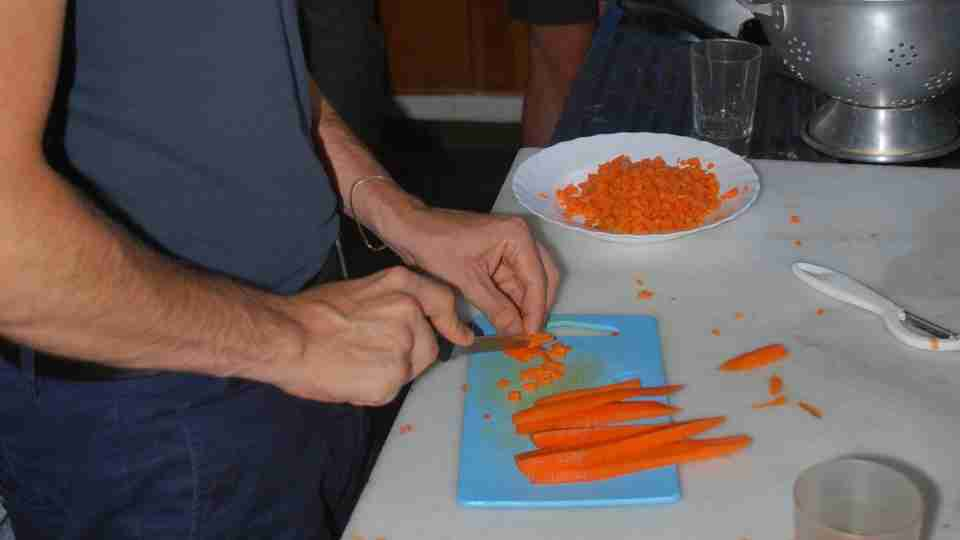Guen Mai Rice Soup
Guen Mai is the rice soup consumed every morning after the first zazen. The preparation of this traditional dish from Zen monasteries is an excellent exercise in attention and concentration. After the morning meditation, we can have tea, and then get to work. Keep in mind that the total cooking time is approximately 5 hours, and during this time, it is better not to leave the kitchen.
Ingredients for Guen Mai
Brown rice (between 30 and 50 grams per person). It should not be white rice, nor the type of brown rice that claims to cook in 20 minutes. And the five vegetables: carrot, onion, leek, celery, and turnip. In Zen monasteries, nothing is wasted, so all parts of the vegetables are used. The quantities of the five vegetables are generally 100 grams of each vegetable per kilogram of rice. Utensils: A tall pot and a wooden spoon.
How to prepare Guen Mai
While the rice is being washed, water is boiled in a tall pot with a diffuser, so the rice doesn’t stick, in a ratio of 10 to 1, meaning ten parts of water for each part of rice. This ratio may vary depending on the intensity of the heat or the pot used, so experience tells us that between nine and twelve parts of water can be used per part of rice. Do not add salt to the guen mai. When the water begins to boil, add the rice, which has been previously washed, and let it cook on high heat, ensuring the water continues boiling at all times, for about three hours until a thick film forms due to the starch released by the rice when the grains break down. This starch is very beneficial for sensitive stomachs.
Cooking with mindfulness
While the rice is cooking, wash the vegetables and cut them into small pieces, all the same size. Add them to the rice and cook for 2 more hours over low heat, stirring continuously with a wooden spoon, without scraping the bottom of the pot. If the water runs low, gradually add hot water. It’s important to be especially vigilant during the final hour, as the rice tends to stick to the bottom of the pot and can take on a burnt flavor. Attention and concentration must be maintained at all times until the end. The guen mai soup should not be too thick or too watery. It should be well-blended and homogeneous, with the water not separating from the grains. When serving, you can add tamari and gomashio.
How to make Gomashio
To make gomashio, which accompanies the guen mai, you need 15 tablespoons of sesame seeds to 1 tablespoon of unrefined sea salt. Toast the sesame seeds in a pan without oil, stirring with a wooden spoon. Once the seeds release their characteristic aroma and begin to turn golden, remove them from the heat. Place them in a suribachi (a Japanese mortar) along with the salt, and grind the mixture clockwise for a good while. The seeds should break down and release their oil, fusing with the salt. The result should be a powder, with no whole seeds remaining.
Enjoy your meal and happy practice!


